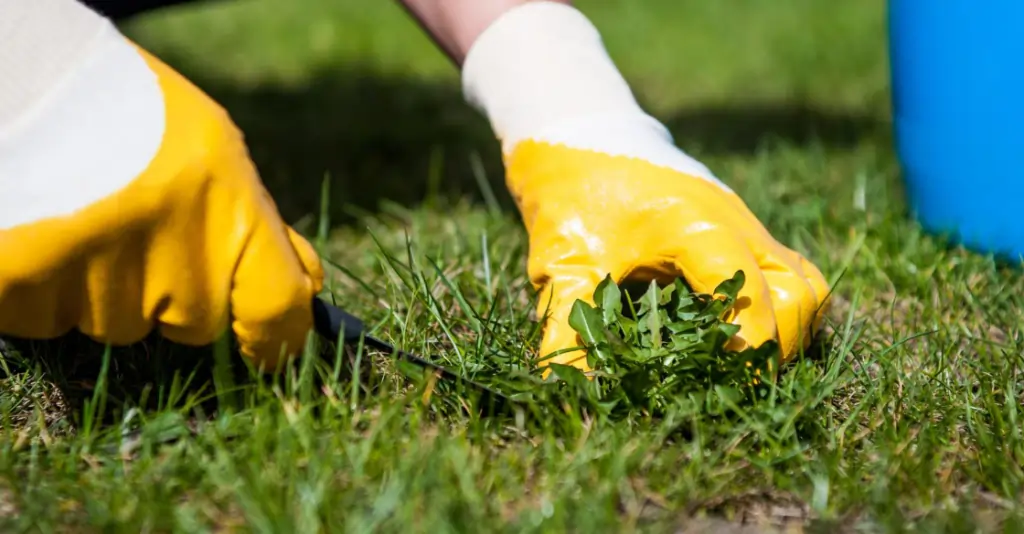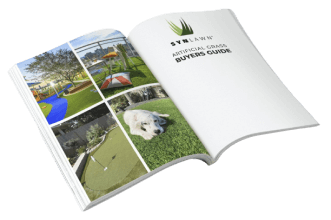So you’ve taken the plunge and invested in an artificial turf lawn. Great! But, what now?
Although residential turf is extremely low-maintenance and has been dubbed the “instant-lawn,” turf does still require some maintenance to keep it in its most pristine and healthy condition. By following these simple turf maintenance tips, you can ensure your lawn looks its best year-round.
Brush, Brush, Brush
No, we’re not talking about your pearly whites here, we’re talking about your artificial turf.
Artificial lawns are laid with a sand infill that gives the turf the weight it needs to stay in place while also providing the structure needed to make the filaments look like an organic grass lawn. Foot traffic, weather, and day-to-day wear can mat down your filaments overtime giving your lawn a flat, one-dimensional look. Maintaining the structure of your turf requires regularly repositioning the sand infill and blades which can be accomplished with a large natural bristle broom for smaller areas, but professional turf brushes are great options for those with expansive areas of turf.
When your artificial turf is initially laid, you should wait 8-12 weeks before brushing in order to let the sand and turf settle properly. Once the turf is fully settled you can begin brushing every 3-4 weeks to keep the blades upright. Brush gently in different directions and patterns to achieve a perky, lush lawn.
Control Weeds & Debris
A severe loathing for weeding your lawn regularly is enough for many people to make the switch to artificial turf. Unwanted weeds are limited in turf lawns because of the film backing on turf rolls that allows for water drainage. While this backing is very effective at suppressing the growth of anything underneath your turf’s surface, a few stubborn weeds will make their way through every once and awhile.
To deal with these pesky intruders, you’ll need to take a different approach than the one you may be used to with organic lawns. Pulling up weeds by hand isn’t an option on artificial turf lawns unless you want to uproot everything and ruin your yard. Using a weed killer is the best way to tackle the root of the problem (pun intended) and ensure that weeds don’t resurface. However, make sure that you use a water-based herbicide to protect the integrity of the artificial turf.
Make sure to also remove natural debris like leaves and pet waste from your turf on a regular basis to prevent clogging in the drainage system which can promote weed growth.

Artificial turf is made up of synthetic fibers that are impenetrable to dirt, water and other substances which makes cleaning your lawn a breeze. Stains are bound to happen from spills, animal waste, and maybe the occasional bloody nose; to clean these stains simply combine hot water and soap in a bucket and use a sponge to spot treat stains. If you have to clean up pet waste then remove it as soon as possible, followed by washing the area with hot soapy water where necessary.
Do’s & Don’ts for Maintaining an Artificial Lawn
Here are a few bonus tips that will help you keep your turf in tip-top shape:
- DON’T use hard chemicals like bleach on your lawn, water and soap is sufficient enough to clean stains and discolorations
- DO keep motorized vehicles off the artificial grass such as ATVs, electric scooters, etc.
- DON’T have any combustible heat sources on your lawn such as cigarettes, fire pits, grills, or fireworks
- DO avoid gum and other sticky substances on your lawn
- DON’T let sharp objects like pointy furniture legs or athletic cleats on your artificial turf
- DO trim surrounding foliage to reduce debris from overhanging trees and plants
Artificial turf is a low-maintenance alternative to traditional grass lawns, but that doesn’t mean it’s NO maintenance. Getting a turf lawn is a huge investment, but you can protect and maximize that investment by following these simple maintenance tips. If you have any other questions about maintaining your lawn or if you’re considering artificial turf installation, please give us a call at 916-794-4600 or get a quote here.

